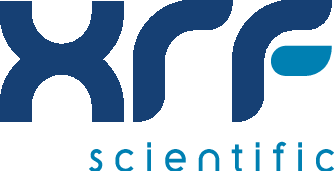Minimizing Matrix Effects in XRF Spectrometry
X-ray fluorescence (XRF) spectrometry is a mainstay in chemical analysis. It provides non-destructive elemental detection of major and trace elements—ranging from 100% to the sub-PPM range. This applies to a huge range of elements, typically from beryllium (Be) up to uranium (U). But it’s not without limitations. Matrix effects, for instance, pose a serious obstacle to accuracy. Elemental variations within the sample trigger these effects. They can disrupt X-ray absorption and fluorescence emission, which impairs results.
Fortunately, there are tried-and-trusted solutions to overcoming matrix effects.
1. Prioritize Proper Sample Preparation
The foundation of accurate XRF analysis begins with meticulous sample preparation. A homogenous and representative sample, free from contaminants, is essential to reduce matrix effects. This often involves crushing and pulverizing the sample into fine dust, ensuring the even distribution of elements within the sample. Following this, accurately weighing and mixing the sample with a flux is critical. One of the most effective methods for overcoming matrix effects is the fusion technique, particularly lithium borate fusion. This technique transforms the sample into a uniform glass bead, eliminating mineral structures that can interfere with the analysis.
2. Utilize a Hydraulic Press for Sample Consistency
To minimize matrix effects, as an alternative to lithium borate fusion, consider compacting your samples into discs or pellets using a hydraulic press. This process ensures that the sample’s surface is as uniform and representative as possible, reducing surface variations that can distort emission spectra. Consistency in the sample’s flatness and density is key to mitigating localized heterogeneities, which are common culprits in matrix-related errors.
3. Leverage Electric Fusion Machines for Homogeneous Samples
Electric fusion machines are invaluable tools in the quest to minimize matrix effects in XRF spectrometry. These machines use resistance heaters to fuse samples with a fluxing agent, creating homogenous discs or beads. This process eliminates heterogeneities within the sample, ensuring that the measurements reflect the true composition of the sample without the interference caused by matrix effects.
4. Implement Matrix Correction Techniques
Even with careful sample preparation and processing, matrix effects can still occur due to the presence of other elements in the sample that affect the observed X-ray counts. To address this, it’s essential to apply matrix correction techniques. These include fundamental, empirical, or regression methods that adjust for absorption and enhancement effects, ensuring that the XRF results are accurate and reflective of the sample’s true composition.
Don’t Let Matrix Effects Impact Your XRF Spectrometry
By employing these strategies—proper sample preparation, using a hydraulic press, leveraging electric fusion machines, and applying matrix correction techniques—you can significantly reduce matrix effects in XRF spectrometry. These methods are essential for obtaining reliable and precise analytical results, helping you maintain the highest standards in your XRF analyses.
Optimize your XRF results with XRF Scientific’s premium solutions. Our high-performance hydraulic presses ensure uniform sample pellets, reducing surface inconsistencies. With our electric fusion machines, which create perfectly homogenous glass beads through precise fusion, you can effectively eliminate matrix effects. Invest in our lithium borate fluxes for consistent, accurate XRF analyses. We also have products available for XRF analysis, as well as articles that detail more information about XRF spectrometers. Discover for yourself how our cutting-edge tools can enhance your laboratory’s precision by visiting our website.




